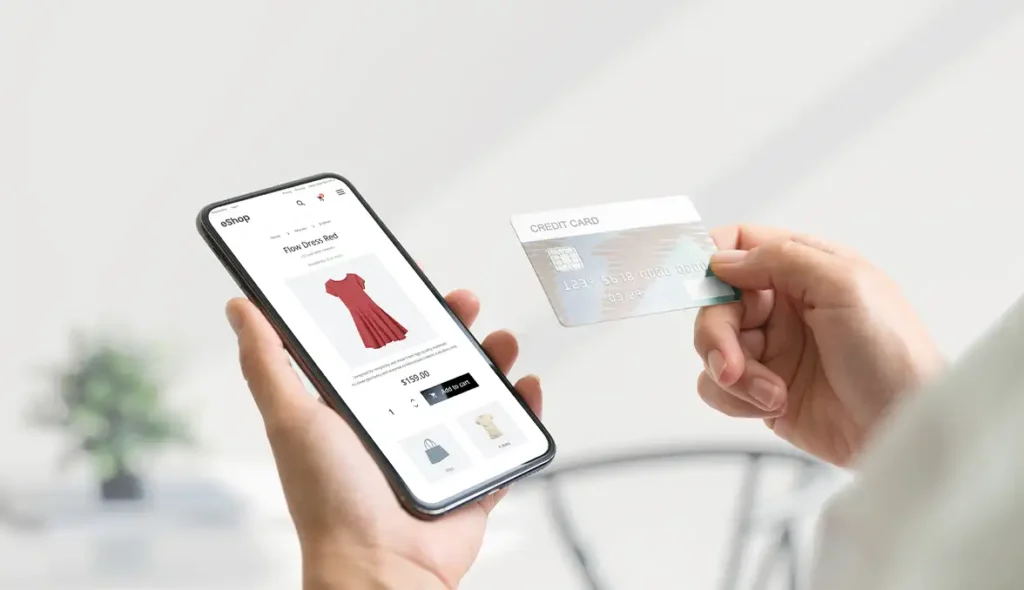In the context of an increasingly digitalized world, constant monitoring of your website’s performance is crucial. Access via mobile devices is now the norm, but despite this, many sites continue to offer a poor mobile experience, thus wasting the precious opportunities that the online world can offer.
This issue not only negatively impacts search engine rankings but compromises conversion and business generation opportunities, making addressing this challenge critical to online success.
Mobile is King
There’s no doubt that mobile has revolutionized the way people access content online.
According to statistics, the majority of web traffic comes from mobile devices. This means that a website that is not optimized for use on smartphones and tablets is neglecting the majority of potential users.
SOME DATA
In Italy 67% of online searches take place via mobile phone.
58% of smartphone users prefer companies whose sites or mobile apps remind them of their past behavior. (Google/Ipsos, 2019)
Mobile website purchases increased 48% during the COVID-19 pandemic. (Statista, 2021)
Reducing mobile site speed by 0.1 second results in an 8% increase in conversions. (Deloitte, 2020)
8 out of 10 consumers would stop engaging with content that doesn’t display well on their mobile devices. (Ironpaper)
Poor mobile usability is a common problem
A website with poor mobile usability misses out on valuable opportunities for conversion and business generation. Frustrated users will quickly abandon a website that doesn’t work well on their mobile devices. This means that even today many companies are losing potential customers and revenue.
Additionally, a negative mobile experience can damage a company’s online reputation. Users may share their frustration on social media or through negative reviews, further compromising the company’s credibility and image.
Many websites continue to suffer from problems such as:
- Slow to load: Heavy, unoptimized websites take too long to load on mobile devices, discouraging impatient users.
- Unresponsive layouts: A layout that doesn’t scale properly to the screen size can make content difficult to navigate and read.
- Unclickable elements: Buttons that are too small or too close to each other can cause misclicks and frustrate users.
- Illegible text: Text that is too small or in colors that are difficult to read against bright or dark backgrounds can make reading difficult.
- Intrusive pop-ups: Annoying pop-ups or ads on mobile devices can harm the user experience.
Google doesn’t forgive
In addition to the direct economic consequences, poor mobile usability also has a negative impact on search engine rankings. Google, in particular, has expressed its commitment to users’ mobile experience through a series of algorithm updates, the most notorious of which was “Mobilegeddon” in 2015.
Google values mobile compatibility as an important ranking factor.
Websites that don’t offer an optimized mobile experience are penalized in mobile search results. Google claims to primarily use the mobile version of a site’s content for indexing and ranking. This process is called mobile-first indexing.
This means that even if a website offers high-quality content, it may not be visible to mobile users, who make up a significant portion of the online audience.
How to face the challenge of mobile usability
To avoid decline in search results and maximize conversion opportunities, companies must address the mobile usability challenge proactively. Here are some key steps:
- Responsive design: Make sure your website is designed responsively, automatically adapting to different screen sizes on mobile devices.
- Loading speed: Optimize page loading time for mobile devices, minimizing delays.
- Readable content: Make sure text and images are easily readable on smaller screens.
- User Testing: Conduct mobile usability testing to identify issues and improve user experience.
- Mobile SEO: Optimize your website for mobile search, including using targeted keywords and creating mobile-friendly content.
To overcome these limitations, the current design approach is Mobile First.
The Mobile First approach
The “Mobile First” approach (in Italian, “Mobile Prima”) is a web design and development philosophy that places priority on the optimization and consideration of mobile devices during the process of creating a website or application. This approach was created to respond to the explosion in the use of smartphones and tablets as primary Internet access devices and to address the specific challenges associated with these platforms.
Origins of the Mobile First approach
The Mobile First approach was introduced by Luke Wroblewski, a renowned designer and author, in his book “Mobile First” published in 2011. At the time, the use of mobile devices for Internet access was growing significantly, and Wroblewski emphasized the importance of adapting web design practices to meet the needs of mobile users.
The Mobile First approach has become increasingly important today for several reasons:
Growth in the use of mobile devices
Users are spending more and more time on their mobile devices, using them to browse the Internet, search, shop online, and more. Ignoring this potential audience would mean missing out on significant business opportunities.
Google and the mobile-first algorithmstrong,
In 2018, Google launched the mobile-first index, which means the search engine prioritizes mobile-friendly sites in search results. This has made the Mobile First approach even more crucial for SEO (Search Engine Optimization).
Improved user experiencestrong,
Mobile First design focuses on usability and accessibility on mobile devices, thus improving the user experience across all platforms. A well-optimized website for mobile devices offers faster loading times, readable content and intuitive navigation.
What does the Mobile First methodology consist of
The concept of “Mobile First” is a design philosophy that places attention on creating mobile-optimized user experiences (UX) and user interfaces (UI) as a fundamental starting point for developing a website or ‘application.
This approach recognizes the growing importance of mobile devices in people’s lives and seeks to ensure that the experience on mobile devices is seamless, intuitive and satisfying.
“Mobile First” design is based on several key principles that directly impact the UX/UI:
- Mobile-first: Design starts with mobile optimization and then expands to accommodate larger screens like tablets and desktops. Focusing on the user’s essential needs and eliminating the unnecessary is crucial to mobile success. This results in a clean, minimalist user interface that improves usability.
- Essential content: Essential content and features for mobile users are identified and placed at the forefront, avoiding information overload. Mobile devices have limited resources compared to desktop computers, so “Mobile First” requires rigorous performance optimization. This results in faster loading times and better responsiveness, key elements of good UX.
- Responsive Design: Responsive design techniques are used to ensure the site automatically adapts to different screen sizes, ensuring a consistent experience on any device.
- Continuous Testing: Frequent testing is conducted on mobile devices to ensure the user experience is optimal. This helps identify UX/UI issues in a timely manner and iterate to improve the experience.
- Performance optimization: Pay particular attention to loading speed and image optimization for mobile devices.
To date we can say that the Mobile First approach, born as a response to the evolution of online user behavior, has established itself as a fundamental practice in the world of web design and development.
By focusing on mobile first, you improve user experience, optimize SEO results and maximize business opportunities in an increasingly mobile digital environment.

The importance of integrating tools like HubSpot
However, today it is no longer enough to have a mobile-friendly website to earn a share of online success. It is essential to intercept the right buyers, attract qualified traffic, i.e. prospects who are truly interested in your services and products.
This is where inbound marketing tools such as HubSpot come into play, the platform that contains a powerful, completely free CRM and refined integrated tools to manage all Marketing, Sales, Customer Service and Content Management activities.
HubSpot offers a number of key features including:
Generation of Contacts and Leads
Thanks to customized forms and landing pages, HubSpot allows companies to capture information about website visitors and turn them into contacts and leads. HubSpot automates marketing processes, allowing businesses to send targeted messages based on user behavior and needs.
Lead Nurturing
By sending relevant content and tracking user interactions, HubSpot helps nurture leads along the path to conversion.
Data analysis
HubSpot provides detailed analytics to evaluate the effectiveness of your marketing strategies and make improvements.
Kiosk: an advanced proposal
Mobile usability is critical to a website’s online success. Not only does it impact conversion and business generation opportunities, but it also has a direct impact on search engine rankings. Businesses that want to thrive online must commit to mobile optimization and ensure their websites offer a high-quality experience across all devices.
In an increasingly mobile world, it’s a crucial step to stay competitive and relevant.
For businesses looking to improve the mobile usability of their website and leverage tools like HubSpot for demand generation, Kiosk is the answer.
Kiosk stands out for its cutting-edge service offering in the field of mobile optimization, combined with a complete integration with HubSpot. This synergy allows businesses to not only get a mobile-optimized website, but also access a comprehensive and highly effective digital marketing strategy.
 |
Get off on the right foot.Speak to one of our consultants and request a free web site assessment. You will be able to discover which elements to leverage for the growth of your business with a platform like HubSpot. And if you want, you can make use of our team for onboarding and additional services. |
 |
Get off on the right foot.Speak to one of our consultants and request a free web site assessment. You will be able to discover which elements to leverage for the growth of your business with a platform like HubSpot. And if you want, you can make use of our team for onboarding and additional services.
|



